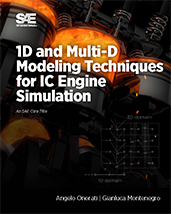Technical Paper
CFD Modeling of Conventional and Pre-Chamber Ignition of a High-Performance Naturally Aspirated Engine
2024-04-09
2024-01-2102
The abatement of carbon dioxide and pollutant emissions on motorbike spark-ignition (SI) engines is a challenging task, considering the small size, the low cost and the high power-to-weight ratio required by the market for such powertrain. In this context, the passive pre-chamber (PPC) technology is an attractive solution. The combustion duration can be reduced by igniting the air-fuel mixture inside a small volume connected to the cylinder, unfolding the way to high engine efficiencies without penalization of the peak performance. Moreover, no injectors are needed inside the PPC, guaranteeing a cheap and fast retrofitting of the existing fleet. In this work, a 3D computational fluid dynamics (CFD) investigation is carried out over an experimental configuration of motorbike SI engine, operated at fixed operating conditions with both traditional and PPC configurations.

